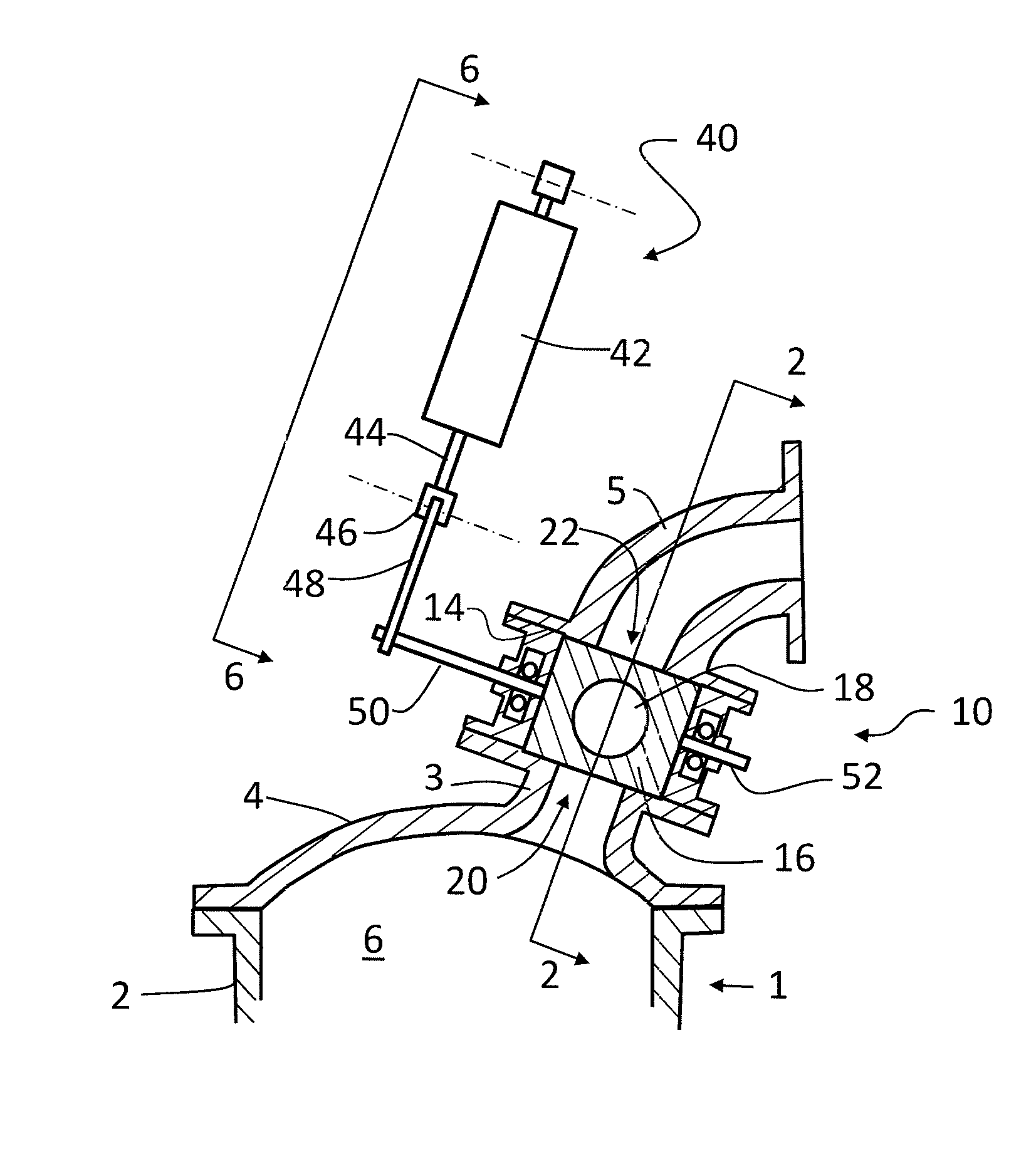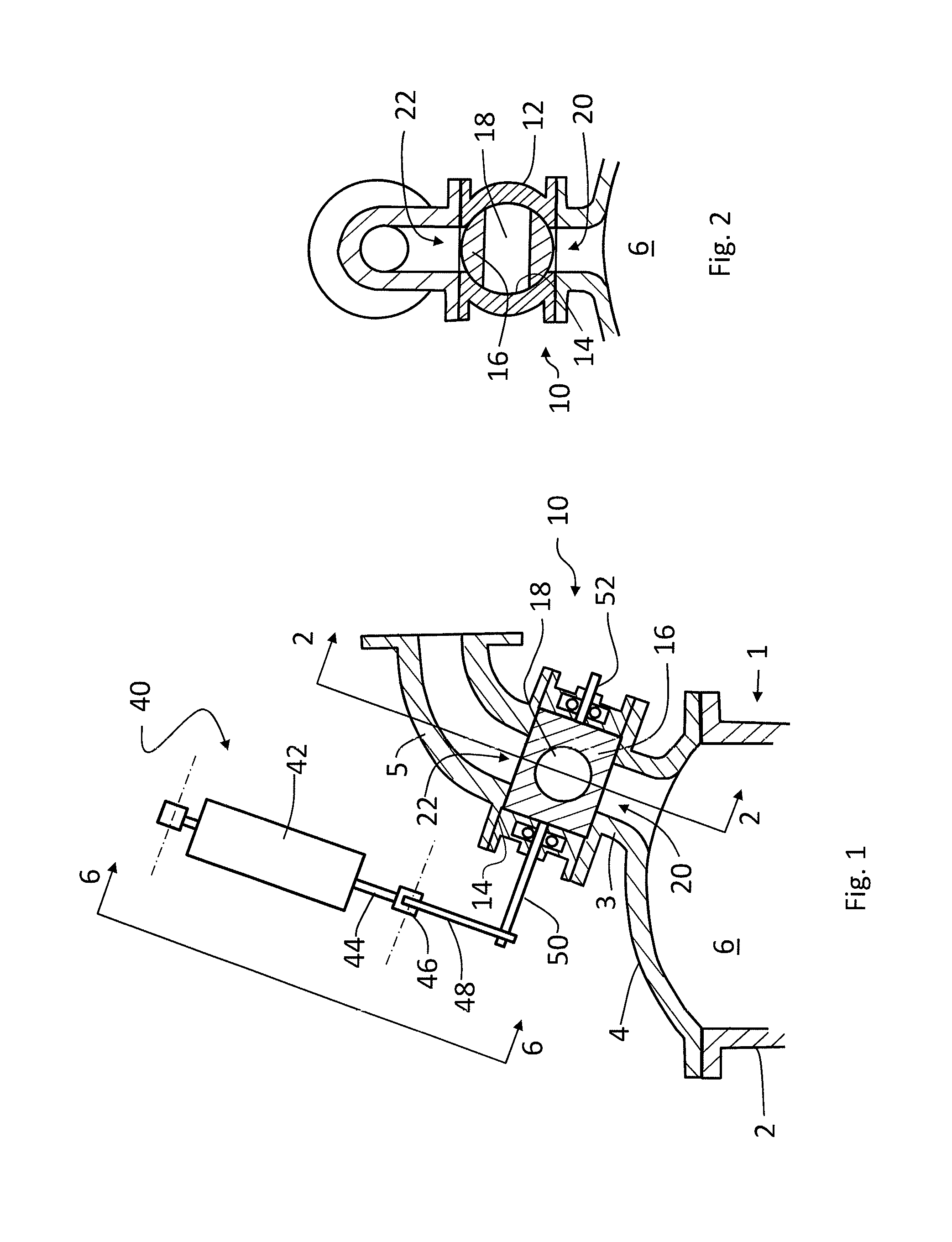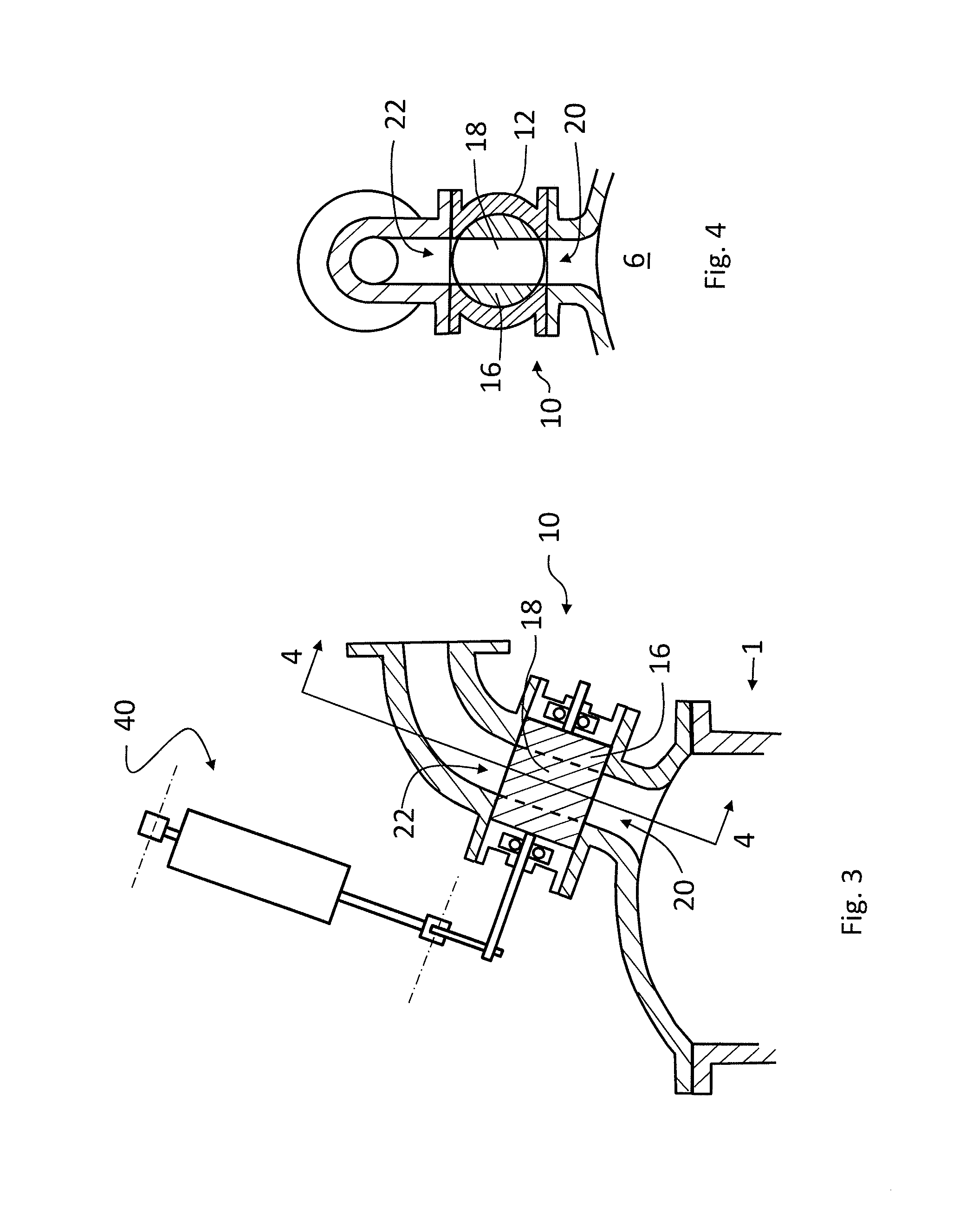Solenoid-controlled rotary intake and exhaust valves for internal combustion engines
a technology of internal combustion engines and valve timing, which is applied in the direction of oscillatory slide valves, machines/engines, non-mechanical valves, etc., can solve the problems of significant pressure loss in exhaust gasses, high heat stress, mechanical failure, etc., and achieve complex mechanical systems to change valve timing
- Summary
- Abstract
- Description
- Claims
- Application Information
AI Technical Summary
Benefits of technology
Problems solved by technology
Method used
Image
Examples
Embodiment Construction
[0029]FIGS. 1-6 show a rotary valve and a rotary valve assembly for a cylinder of an internal combustion (IC) engine. The rotary valve and rotary valve assembly can be employed as an air inlet valve or as a combustion air exhaust valve.
[0030]The engine cylinder 1 includes a cylinder wall 2 and a head 4 that define a cylinder space 6. The rotary valve 10 is mounted to an inlet gas pipe 3 of the cylinder head 4 having a gas inlet passage 20, and to an outlet gas pipe 5 having a gas outlet passage 22.
[0031]As shown in FIG. 5, the rotary valve 10 includes a fixed housing 12 having a cylindrical bore 14 arranged on an axis 100, an inlet port 13 intersecting bore 14 substantially perpendicularly, and an outlet port 15 intersecting bore 14 substantially perpendicularly, wherein bore 14 and inlet / outlet ports 13, 15 provide a fluid communication through the housing 12. The gas inlet passage 20 and the gas outlet passage 22 communicate fluidly with the inlet port 13 and the outlet port 15, r...
PUM
 Login to View More
Login to View More Abstract
Description
Claims
Application Information
 Login to View More
Login to View More - R&D
- Intellectual Property
- Life Sciences
- Materials
- Tech Scout
- Unparalleled Data Quality
- Higher Quality Content
- 60% Fewer Hallucinations
Browse by: Latest US Patents, China's latest patents, Technical Efficacy Thesaurus, Application Domain, Technology Topic, Popular Technical Reports.
© 2025 PatSnap. All rights reserved.Legal|Privacy policy|Modern Slavery Act Transparency Statement|Sitemap|About US| Contact US: help@patsnap.com



